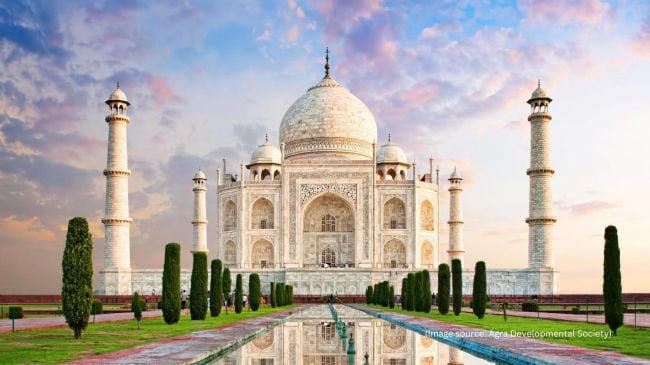Opinion Empower ASI to do its job
Our decision-makers are shedding their knowledge of history and their imagination. Problem also lies in defining ‘monument’.
 The ASI and conservation architects must work in harmony. Builders of earlier times worked as a guild, each member proud of his expertise. (File Photo)
The ASI and conservation architects must work in harmony. Builders of earlier times worked as a guild, each member proud of his expertise. (File Photo) In a brave new world which I will not see, they will invent a train that will take you back in time, and you will trudge with Joseph David Beglar through Mehrauli in 1871, go back to the 1840s and wander through Tughlaqabad with Syed Ahmad Khan, and meet up with Dargah Quli Khan in the 1760s. Each of them wrote about buildings in Delhi. At each point of time, the explorer found that some of the places they read about had gone the way of all brick and stone. It was not a static landscape. This was true of all of South Asia. In 1861, the imperial British government launched a project to supplement the Geographical Survey of India with one specifically on the architectural vestiges of India’s past. That was wise anticipation. The enumeration, strengthened in 1904 by the power to “protect” them, was what kept most of them standing while Indian cities became more heavily populated.
That was in 1861. After Lord Curzon empowered the Archaeological Survey of India (ASI), it commanded respect and did fine work. But in recent decades, it has slipped in the list of priorities, jolted by the emphasis on culture and tourism. And now comes the final, ironic blow — it is said to have outlived its relevance, like telegrams, post-boxes and so much else.
What went wrong?
It will be obvious that the casual manner of announcing this suggests that there are non-casual reasons behind it. It does not take much to figure out that the ASI is another victim of real-estate considerations, covered up with promises of spectacle.
This announcement follows another policy statement from last year: A bill presented to Parliament that proposed to “rationalise” the number of ASI-protected monuments. The problem lies with the word “monument”. We live in a time when public or historic art must be larger than life — of Brobdingnagian proportions — when Sardar Patel must be stretched to an improbable height like a Giacometti statue, or Subhas Chandra Bose be made to fit a canopy which had accommodated a life-size statue of George V, or Shivaji’s greatness conveyed through a 35-foot statue. Alas, our decision-makers shed their knowledge of history — and their imagination — as they grow older. It is their loss. Small, or even larger, protected areas can be imaginatively made part of urban public spaces. But those who make decisions see ruins as blocking profitable real estate. It was the belief that different forms and spaces in our cities could be harmonised that had led the brilliant architect Patwant Singh to persuade the government to set up an urban art commission for Delhi in 1974. The Delhi Urban Art Commission (DUAC) had immense possibilities, but it did not take on the challenge. As for the general assumption that the commission was to do with “urban arts”, the consequences are there for all to see.
When it comes to the ASI, the following are needed.
Give the ASI employees a sense of pride in what they do. I have seen junior employees who enjoy their work but have no illusions. When I sent one of them a notice about a conference in Europe, he laughed and said, “I will have to inform my boss, and he will say, ‘I will go. You are too junior.’” If junior employees could share a sense of purpose, if they could be told why their work is important, they would hold their heads high.
The ASI and conservation architects must work in harmony. Builders of earlier times worked as a guild, each member proud of his expertise. This can still be seen in Kerala, Rajasthan and Odisha. The terms “vaastu” and “vernacular” are bandied about in conferences and forgotten the next day. They should be part of the conservation archaeologist/architect’s mental toolkit.
Introduce the conservation architect, the latest player in the field. In the early 19th century, engineers were happy to be archaeologists, and architects were employed by the PWD. The new genre of heritage conservation architect followed from UNESCO’s 1964 Charter of Venice and the designation of World Heritage Sites. In 1982, Nalini Thakur was the first Indian architect to qualify as a conservation architect from Rome. She is a rare example of someone whose strong integrity has stood her in good stead through a minefield of scepticism. The project she did for the DDA in 1988 — the Mehrauli Archaeological Park — should be named for her. Today, there are over 500 conservation architects in India, though not all engaged in the work they specialised in. There is a grey area of old buildings that are not “protected”, which employ them, as do the many institutions offering courses in “heritage management”, an offshoot of tourism, that have only minimally to do with heritage.
The ASI needs to come out of its anonymity and have in-site discussions. Heritage walks have taken off in a big way in the last 30 years. The ASI should be part of this outreach activity. They should make their resources — books and maps and photographs — available to all instead of allowing them to decay in stuffy rooms.
If the government’s plans come through, some conservation architects will be employed by individuals bidding for the monuments of their choice; the small structures will be demolished. And someone will write a lament for Chhoti Gumti, which lights up the road to Hauz Khas village after dusk.
The writer is a Delhi-based historian






